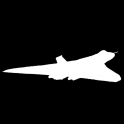Do.217K-1 WWII German Bomber (48273)
1:48 ICM
The origin of the Do.217 was the Do.17 ‘Flying Pencil’ as it was colloquially known, with a brief to extract more power from the engines, extend its range and give it a better bomb load amongst other improvements. The resulting airframe was sound, and left other early war designs in its wake, becoming known as a heavy bomber in Luftwaffe service, something they were very short of throughout the war. It was also a versatile aircraft along the same lines as the Ju.88, and was adapted to many other roles like its predecessors, including the night fighter role, to which it was eventually well-suited, although not initially. Various engine types were used through the endless rounds of improvements, with radial and inline engines fitted in a seemingly random pattern throughout the aircraft's life.
The 217E was the first of the production airframes, using BMW engines for level and dive-bombing roles, skipping to the K that adopted the stepless, all-glazed forward fuselage that had been deemed a standard requirement for the He.111 and later He.177, the design for the K very similar in shape to that of the 177. The K-1 was the bomber standard, adding extended wings and the capability to carry the Fritz-X glide bomb to the -2, and the -3 capable of carrying both the Fritz-X or Hs.293. A switch of engines to inline DB.603s saw the mark changed to M, while the sub-variants stayed the same, but with an extra 100+ horsepower under each wing improving performance, and probably reducing drag slightly thanks to the sleeker cowlings. The night fighters ran concurrently with the bombers, had a crew of three in an enlarged cockpit and solid nose sporting four MG17 machine guns and another four 20mm cannons in the front of the gondola for concentrated forward fire initially. The J-1 was disliked and the J-2 was little better, the upgrades still not enough to quell the complaints from the crews, leading Dornier to produce the improved N series, which eventually entered service in small numbers as the N-1 and N-2 variants before the type was phased out of service by mid-1944.
The Kit
This is a tooling revision from ICM, based upon the sprues from previous boxings by ICM, of which there have been many. This is the first time an injection-moulded kit of the K has been released, the previous options either a long out-of-production conversion kit for the aging Revell kit, or a similarly dated vacformed kit from another manufacturer. As a modeller that enjoys German bombers, and has a long-standing liking or all-glazed cockpits, this hits a sweet-spot for me on a personal note, and anyone that is interested in the type will appreciate both the ease of creating this unusual variant, and the wide availability that it should now enjoy. The kit arrives in a standard ICM top-opening box with the usual captive flap on the lower tray, the lid decked with a dramatic dusk (or dawn) painting of a K-1 flying high over broken cloud. Inside the box are twelve sprues of grey styrene, two sprues of clear parts, a large decal sheet, and a thick instruction booklet that is printed in colour on glossy white paper, with full colour profiles for the four decal options and the rearmost pages. Detail is up to the standard of the other kits from ICM and the Dornier Do.17/215/217 range of kits with which we’ve been blessed over recent years. The new sprues include a pair of fuselage halves, the clear parts, and new engine nacelles to replicate the specifics of the K-1, leaving plenty of other parts on the sprues, which are marked on the map with a red overprinting, and includes a set of larger bombs not appropriate for this variant.
Construction begins with the well-detailed cockpit and fuselage, adding sidewall details to the two halves, and fitting additional details such as seats with supports, one on each side. The cockpit floor has a raised section for the pilot, to which the two-part bomb sight, a bulkhead insert, and the pilot’s five-part figure-hugging seat, plus two-part control column with yoke are installed. The completed assembly is inserted in the starboard fuselage half, adding a further stepped bulkhead behind it, and a stepped spar that slides through slots on the side, linked to a smaller bulkhead behind the bomb bay by the bay roof part, which has ribbing detail moulded-in, although it won’t be seen. The port side console has an instrument panel with dial decals applied, plus another four-part swivel chair that is placed behind the main cockpit for the rear-facing gondola gunner. As the fuselage parts are brought together, a bracket is trapped in the tail wheel bay, dealing with the seams in your preferred manner before moving on. A new clear domed nose is supplied, widening the hole for the nose machine gun if you intend to fit the double, or zwilling MG81Z there. Your choice is slid through the appropriately-sized hole and is joined above by a two-part instrument cluster attached to the top frame, gluing it to the front of the fuselage at the same time as your choice of tail fairing is fitted, either with or without twin rear-facing machine guns. The rear of the nose gondola has a single machine gun slipped through the hole in the glazing, fitting it below and behind the cockpit to close the underside, building the tail-wheel assembly from a yoke with surround, and two-part wheel with radial tread moulded-in, which fixes in the recess under the tail. The bomb bay is closed by use of a single part to depict the twin doors in the closed position, or you can add extra detail to the sides of the bay along with a triple-laminated C-shaped bulkhead to the rear, and a choice of bombs from the included weapons sprues. The bay doors are formed from a single outer door, plus a two-part inner door on each side, with a scrap diagram showing the correct layout when the area is completed.
The upper wing is full-span, and is laid over the fuselage and short spar, closing it by adding the separate lower halves, followed by the elevator and H-tails that all have separate flying surfaces, as do the wings, with separate single-part ailerons, all of which can be posed deflected to give your model a more candid appearance. The radial BMW units are made up from two banks of pistons, the rear set having a bulkhead moulded in, then has the ancillaries and cooling fan added to the front. The cowlings are built in sections with exhaust stubs fitted to the insides, with three sections linked to complete the cylindrical cowling into which the engine slots before being locked in by the front cowling lip. This of course is done twice, as are the nacelles, which have ribbing detail moulded within and bulkheads to add detail and prevent see-through issues. The engine cowling slots onto the front of the nacelle and the retraction jacks are installed from above before they are fitted to the wing, as are the main oleos, mudguards and the two-piece wheels. You can also add in the gear bay doors at this point if you’re a masochist, or leave them off until main painting is over.
The underside is completed by adding in the engine nacelles, and mounting the tail-bay doors to the sides, with a prism-like insert forward to complete the area. Flipping the model over shows the open cockpit, which needs the remaining parts adding before the glazing can be glued in place. A flying bulkhead or divider is adjusted according to a scrap diagram and inserted into the rear of the cockpit, adding a circular turret base behind it, then building the Pielgerat 6 (PielG6) sensor and base to a hole in the forward section of the canopy, a pair of aft-facing guns on the rear “cheeks” of the canopy, each one fitted with a separate gun. The canopy can then be glued in place behind the nose glazing, installing the domed turret glazing and another machine gun in the larger hole at the rear of the glazing, plus an antenna mast on the wing behind it, with two more under the wing and on the aft fuselage, low down on the side.
The props are made up from a single part with all blades moulded in, then trapped between the front and rear parts of the spinner. The last parts are a set of cheek “pouches” at are fixed to either side of each nacelle with a set of curved grilles moulded in, and two exhaust deflectors on the top of the nacelles. Three-part auxiliary intakes are made and applied to the engine nacelles in front of the exhaust stacks, fitting three per engine, and making the prop from a three-bladed part that is trapped between the spinner and back-plate before being glued to the front of the engines.
If you intend to leave the bomb bay open, the three last instruction steps show the three types of bomb that can be carried. SC500J, SD250Jb and SC250Ja can be fitted, all made from two halves plus a pair of perpendicular fins, braced by struts that link the fins, and in the case of the SC250Ja, a set of four “screamers” that cause the bombs to whistle on the way down to terrify their intended victims even more. The Jb and Ja bombs are options, using one or the other behind the larger 500kg units.
Markings
There are four decal options available from the decal sheet, with a variety of paint schemes, three using splinter on the upper surfaces that are shown on a greyscale diagram before the main profiles. The other option is an all-black machine with grey uppers with dark grey squiggle camouflage over the top. From the box you can build one of the following:
Luftflotte 2, Mediterranean area, probably 1943
Stab/KG.2, Holland, 1943
1./KG.66, Chartres, France, Summer 1943
1./KG.2, Rhein-Main, 1943
Decals are by ICM’s usual partners, which is a guarantee of good registration, sharpness and colour density, with a thin gloss carrier film cut close to the printed areas.
As is common now with ICM kits, there is a page of the instruction booklet devoted to the masking of the canopy, using the printed shapes on the right of the page and the diagrams on the left to create your own masks if you wish. It goes up to 54 thanks to the extensive glazing.
Conclusion
Another detailed kit of the Flying Pencil and its relatives, filling a dwindling gap in the range that’s now available from ICM. What’s next?
Highly recommended.
Available from all good model shops now.
Review sample courtesy of

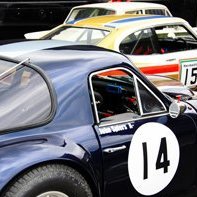


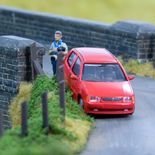

.thumb.jpg.0bc57cb4bb3dec8e063e1951db6690c2.jpg)
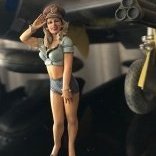
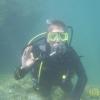

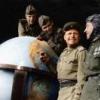
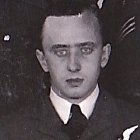




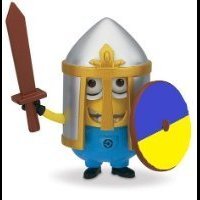
.thumb.png.03cf829e3ab23b3f04fe2590dd61bc3c.png)


